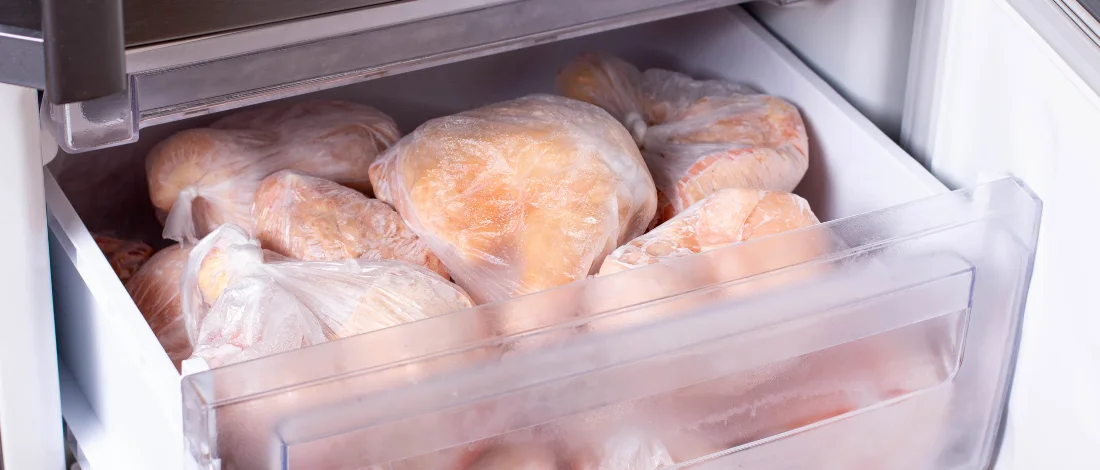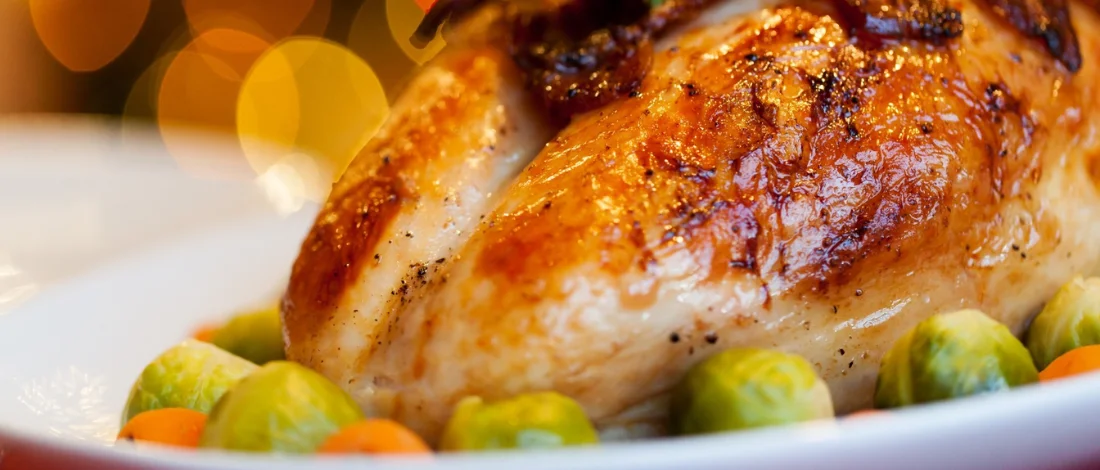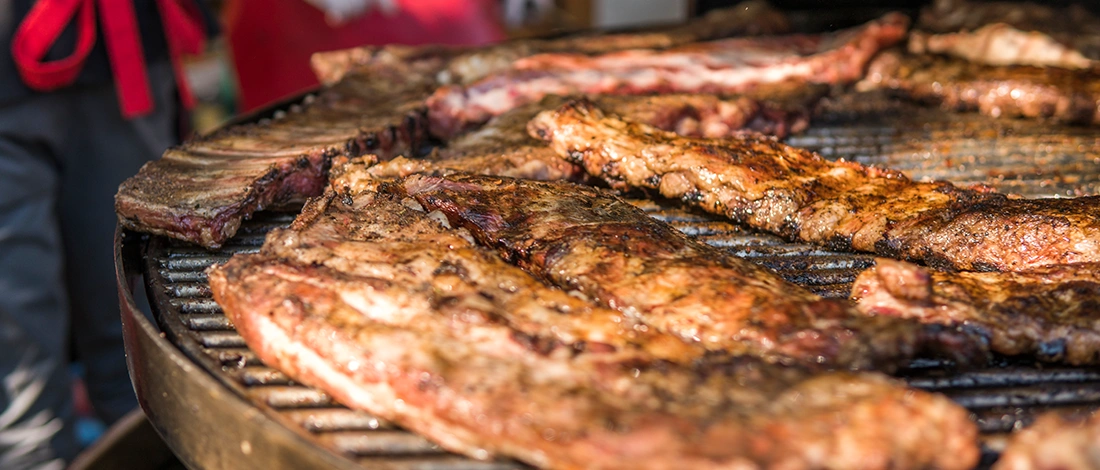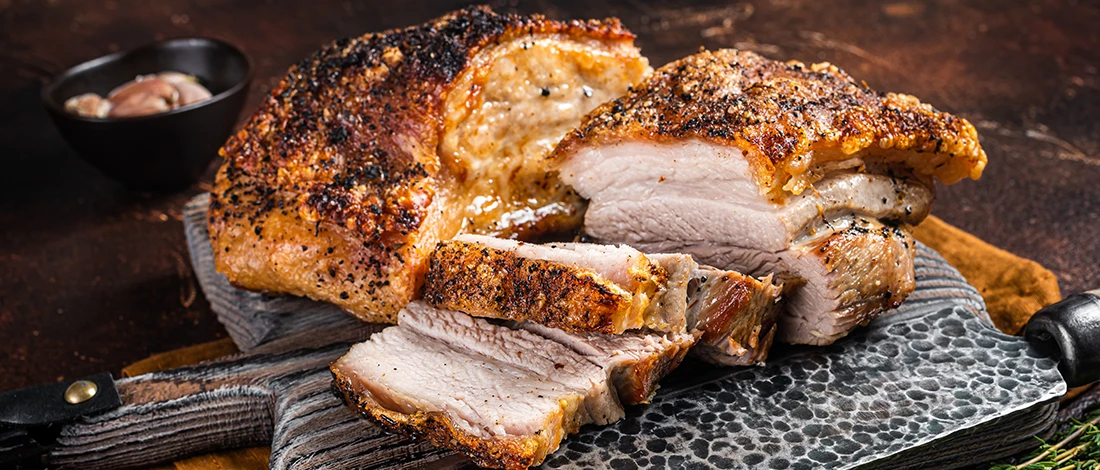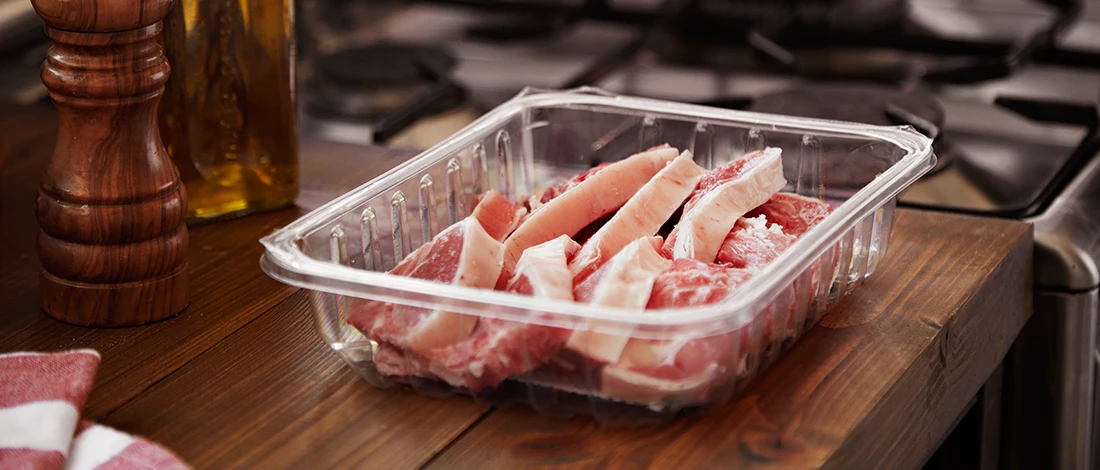As an award-winning pitmaster, I’ve learned that properly thawing a turkey is key to a juicy, on-time meal—not a dry, late disaster.
In this guide, I’ll share expert tips on how to tell if your turkey is fully thawed and the safest, most efficient ways to defrost it.
Quick Summary
- Touch, movement, and temperature are all ways to determine if a turkey is fully defrosted.
- Three safe thawing methods include the fridge, cold water bath, and microwave.
- You can cook a turkey that is not entirely thawed; it just will take longer.
3 Ways to Tell If a Turkey Is Thawed
A frozen turkey should be thawed completely before putting it in the oven, smoker, or deep fryer to ensure it cooks evenly and thoroughly.
Here’s what you need to do.
1. Touch
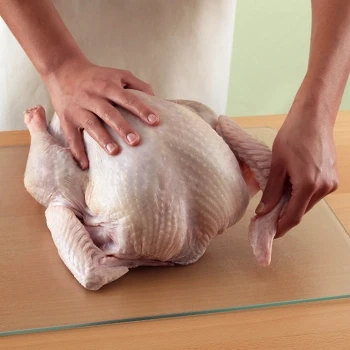
One way to check if a turkey is thawed is by touch. A frozen bird feels stiff, while a thawed one feels soft and flexible.
Gently press the breast and thigh—if they give slightly, it's likely thawed. Also, check inside the cavity for ice crystals; if any remain, it’s not fully defrosted.
2. Movement
Another way to tell if a turkey is thawed is by movement. A frozen bird will be stiff and immobile but become more flexible as it defrosts.
Try moving the wings and legs to test if your bird is thawed enough. If they move easily and without resistance, the turkey is likely ready to start the cooking process.
3. Temperature
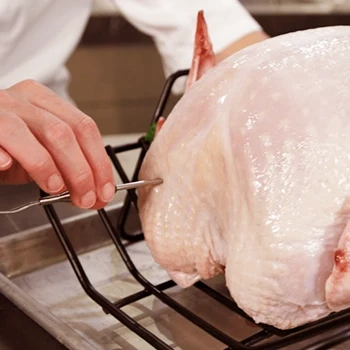
The most accurate way to check if a turkey is thawed is with a meat thermometer.
Insert it into the thickest part of the thigh and breast, avoiding bone. A reading of 33°F or higher means it’s fully thawed.
If thawed in the fridge or microwave, check multiple spots to ensure even defrosting.
"All frozen, stuffed, raw poultry products should be cooked to a safe minimum internal temperature of 165 °F." - U.S. Department of Agriculture
3 Ways To Thaw a Turkey

Refrigerator, cold water, and microwave are the three easiest ways to thaw a turkey.
1. Refrigerator
Thawing in the fridge takes the longest but requires the least effort.
Plan ahead—it can take several days to fully defrost.
Here’s how:
- Keep the turkey in its packaging on a tray to catch juices.
- Place it on the bottom shelf to avoid dripping onto other food.
- Allow 24 hours per 4–5 pounds (e.g., a 20-pound turkey takes 4–5 days).
Once thawed, the turkey can stay in the fridge for 1–2 days before cooking.
2. Cold Water Bath
The cold water method is faster than using the fridge but needs more attention. It’s ideal for quick defrosting without the risk of microwave cooking.
- Fill a sink, cooler, or large container with cold water and submerge the unwrapped turkey breast-side down.
- Change the water every 30 minutes to keep it safe and prevent bacterial growth.
- Allow 1 hour per 2 pounds—e.g., a 20-pound turkey takes about 10 hours.
This method is best for partially frozen birds and only works if the turkey fits in your container.
3. Microwave

The microwave method is the fastest way to defrost small turkeys, but it’s a last resort—it may start to cook the bird.
- Remove the turkey and packaging, and place it in a microwave-safe dish.
- Use the microwave’s defrost setting and follow the manufacturer’s instructions—it may take minutes to a few hours.
- Check the temperature in several spots with a meat thermometer to ensure even thawing.
- Cook the turkey immediately after defrosting, as parts may have started cooking.
3 Tips in Cooking a Frozen Turkey

You can cook a frozen turkey in the oven, but it’s not recommended due to uneven cooking and food safety risks.
If you must cook a fully or partially frozen turkey, follow these tips:
- Start early—frozen meat takes about 50% longer to cook than thawed [1].
- Use a probe thermometer to check the wing, thigh, and breast—all should reach 165°F.
- Avoid stuffing a frozen turkey, as it may not cook evenly.
Related Articles:
5 Turkey Tips For Safe Thawing

Properly thawing a turkey is essential to avoid harmful bacteria.
- Thaw in the fridge whenever possible—plan ahead for enough time.
- If using cold water, fully submerge the turkey and clean the container afterward.
- Never thaw on the counter or in hot water—bacteria grow fast between 40°F–140°F [2].
- Don’t refreeze turkey thawed via cold water or microwave—cook it right away.
- Always wash hands and surfaces after handling raw turkey to prevent cross-contamination.
FAQs
Is Turkey Thawed if It Floats?
No, turkey is not thawed if it floats. Most frozen turkeys float, and you need to place some weight on them to keep them submerged when using a water bath.
What if My Turkey Is Not Thawing in the Fridge?
If your turkey is not thawing in the fridge, it could be due to several factors, such as a malfunctioning fridge, a large turkey, or improper placement of the turkey. If your turkey is still frozen, I recommend thawing it using the cold water bath or microwave method.
Will a Frozen Turkey Contain Bacteria if You Thaw It Completely?
If you thaw a frozen turkey completely, it can still contain bacteria. However, since they never got warm enough to reproduce efficiently, they are unlikely to cause illness. That said, do not let raw turkey meat touch other food; otherwise, those pathogens may transfer.
References:
- https://ask.usda.gov/s/article/Can-you-cook-meat-or-poultry-from-the-frozen-state
- https://www.fsis.usda.gov/food-safety/safe-food-handling-and-preparation/food-safety-basics/danger-zone-40f-140f


